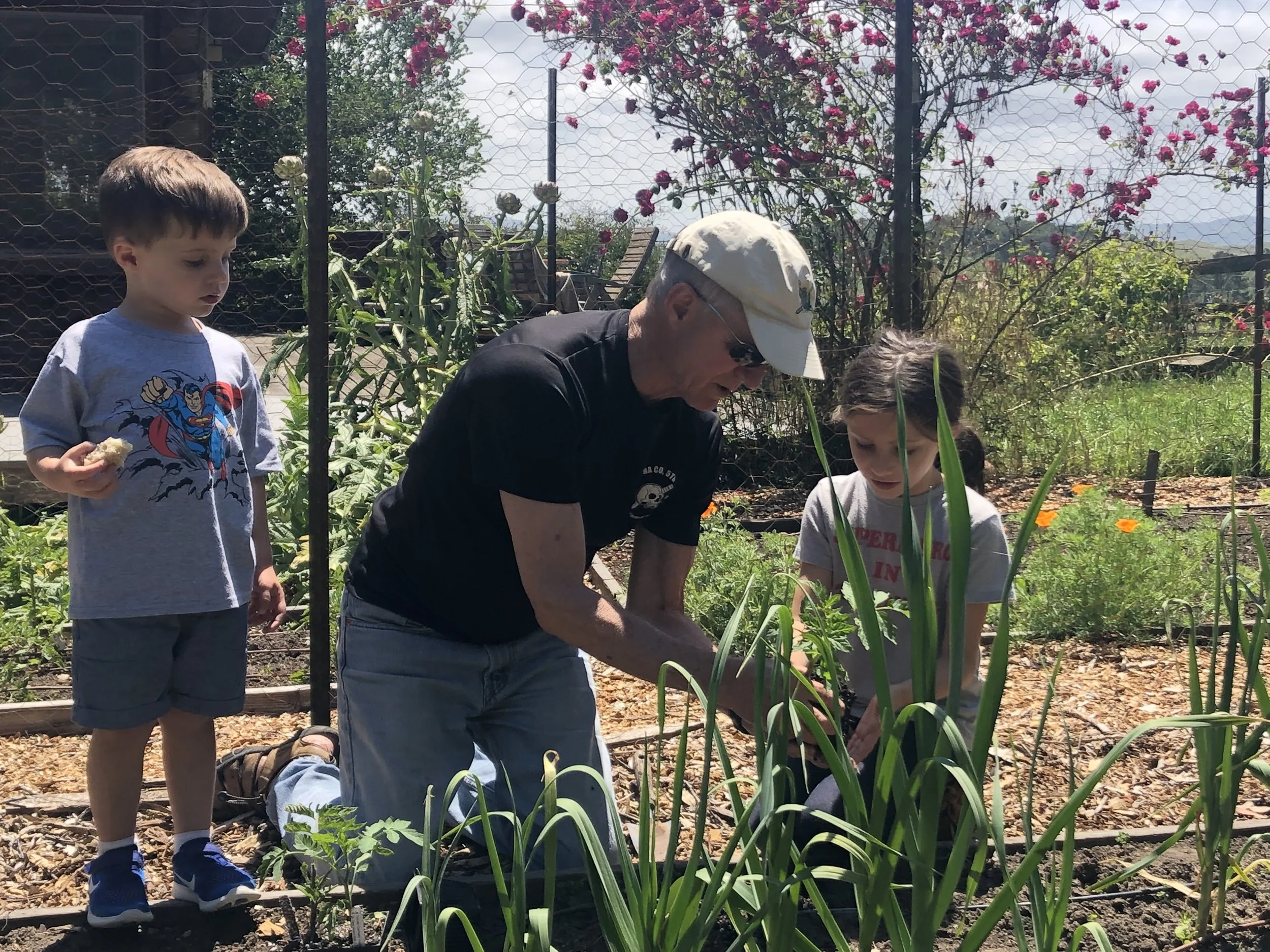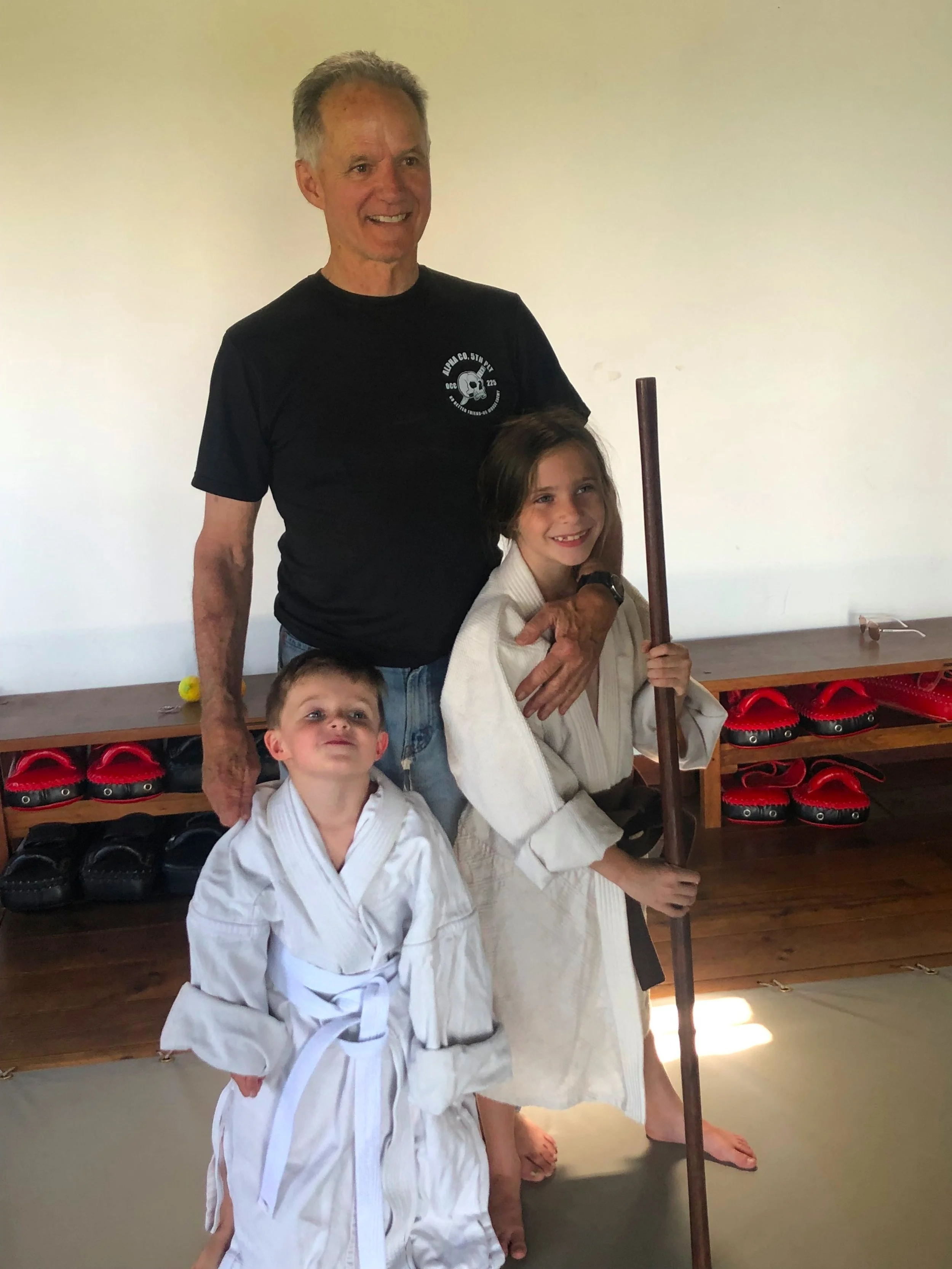The Sea Shell and the Sea Horse: The Intimate Healing of Being Seen
The healing power of softening the boundary between ourselves and others by being deeply seen and deeply received was recently revealed to me in a context other than managing a physical threat. Cameron, my seven year old granddaughter, returned home from her first day of school with a story she illustrated, wrote, and stapled together in book form about a seashell falling in love with a sea horse. When I asked her if I could read it she demurred by offering to read it to me. She then took the position that was most likely how her teacher read to the class: the booklet pointed towards me, her turning the pages, reading the story out loud, and pointing to the drawings that illustrated this unlikely, but tender relationship. I was delighted and impressed by her writing and drawing. I told her we could now share stories we wrote, pick out books at the bookstore, and read together.
Then I asked her to give me her attention, and when our eyes locked I held her story up between us and said, “But more than anything Cameron, I want you to know that this tells me who you are.” She looked at me intently for a long moment then with a deep sigh she softened, letting go into me, resting her head on my shoulder. “Thank you” she said. In that moment Cameron felt seen, not for what she had done, but for who she is. It was an extraordinary moment in which I once again saw the power of seeing and acknowledging someone at their core. While she was moved I felt equal to the benefit, and grace, of seeing her soul, if you will.
A year later Cameron and I exchanged roles. I was at my son Django’s house telling him about a recent incident that had me recall the acrimony that existed between me and my father. My father was emotionally and physically abusive and there was an on-going tension between us as I was growing up. This led him to formally disowning me, forbidding me from ever returning to the house, or even having my name spoken in his presence. This was something that Django and my other children knew, and we had discussed it a number of times. They knew the pain and struggle this rejection had created for me and how it was a central issue in therapy. Now I was simply reporting a new insight but without any affect.
As I continued I noticed that Cameron and her brother Logan, who was five at the time, slowly turned from what they were doing and began to focus on me. I continued with no emotional charge when Logan, wide-eyed and incredulous, interrupted me. “You mean he kicked you out of your house!?” When I nodded affirmatively Cameron purposefully and slowly walked over to me, her eyes shining with compassion, put her arms around me, gently patting my back and said, “I am so sorry. I am so sorry.” Tears spontaneously rolled out of my eyes, and an upwelling of love and belonging enveloped me, soaking my soul in an ocean of tender care. This was a rare moment in which I felt deeply seen, and I allowed her heartfelt compassion to touch me. Despite the many hours of therapy I’ve spent on this issue of being rejected by my father her open-hearted kindness opened new doors of emotional healing. Cameron seeing my deepest wound, fully grasping a foundational experience in my life, was a sacred moment of repair and mending. That moment has become a cornerstone that I call on when I need to resource myself.
When we’re seen and acknowledged, when we’re held with dignity, respect and kindness, a molecular cascade of the “feel good” hormones floods our brain. To be seen clearly in a heartfelt manner generates a feeling of well-being that contributes mightily to our emotional and physical health. It’s like when the first light of the early morning sun touches our face, filling us with hope, joy and the beauty of life. While we’ve known this for millenniums, the technology of neuroscience scientifically grounds this experience for our empirical suspicions. This feeling is particularly compelling when our vulnerability and helplessness are treated with dignity, as well as when our aggression or defensiveness are received with generosity and warmth.
And there was something else.
My response to Cameron’s compassionate seeing showed me that there was still unfinished business with my father to integrate. Her deep seeing revealed that my dispassionate tone, without feeling, kept me at a safe distance from the deeper impact of the father rejection. She saw through this and let her heart speak. Her recognition and caring embrace moved me towards a deeper level of inquiry into how I’m still being run by this event sixty years later.
Powerful and sobering.
And there was more.
Logan then ran over to his father, grabbing his arm in celebration shouting, “My Dad would never do that!”. After a moment’s pause he looked up at him and in total seriousness asked, “Would you?” We laughed and then Django affirmed he would never ever leave them and sealed it with a hug, their arms wrapped around each other. This was a moment of collective healing. Cameron and Logan felt confirmed that their father would never abandon them; Django saw again that I had broken the karmic chain of the father son wound which he didn’t inherit, nor duplicate; and the next level of my shame had been uncovered, which gave me the strength to face deeper into the healing process.
The first example of Marcus revealed how deeply seeing someone has the potential of dissolving aggression and violence.
The second example with Cameron shows how being seen can generate intimacy, and emotional healing.
The third example of Django, Logan, Cameron and myself is an example of a collective healing when a deep seeing occurs. In our case it also revealed that I had broken that pattern of abuse from my father, and it wasn’t passed on to Django, and he hadn’t passed it on to his children.
Whenever I recall the energy of that unconditional hug and love from Cameron I return to a positive, affirmative view of life. In all of my virtues, scars, and blunders I had the experience of being fully seen and received by her; and I was able to receive her love. Two sides of the same energy. At the deepest level there is a unity between the giver and the receiver, the positive and the receptive, the seer and the seen. A foundation for an authentic connection is to fully see the other, and for the other to be open to being seen. To do this minimal trust must be granted; at the same time trust can grow in this rich relational field. When we see with a sincere heart we are rewarded with the intimacy and satisfaction of contributing to the other. And when we receive that gift with an open heart we dignify the seer, and we grow closer to the human being we want to be.
Take It Easy But Take It,
Richard Strozzi-Heckler


